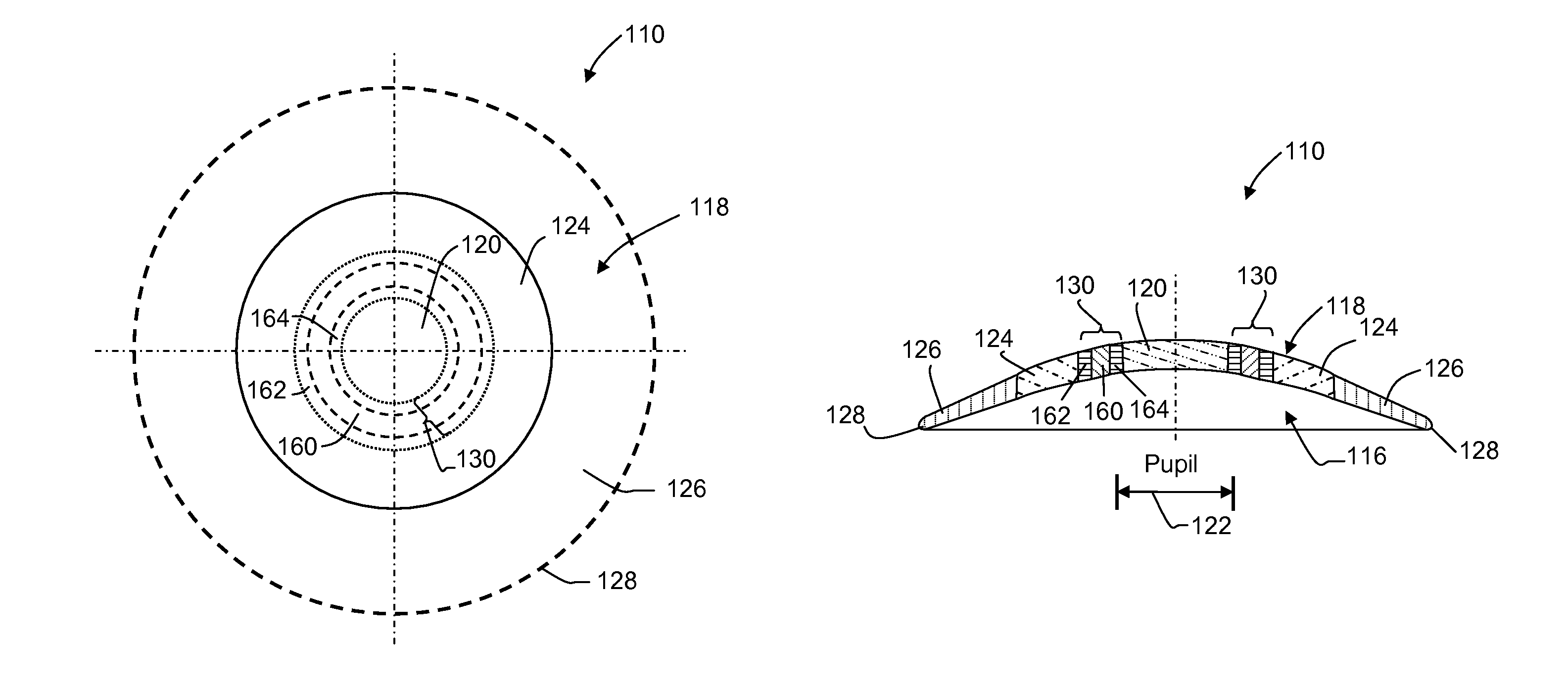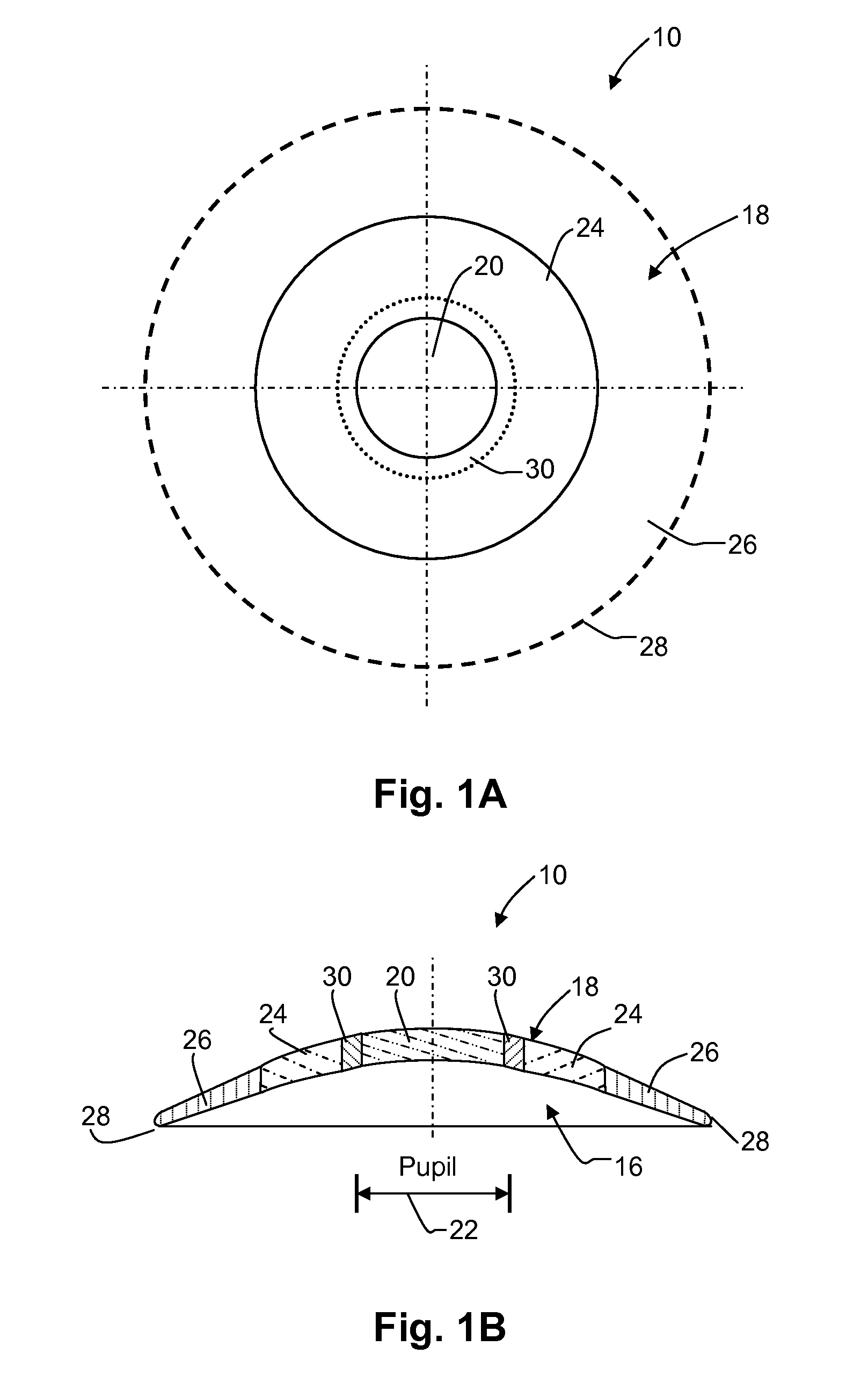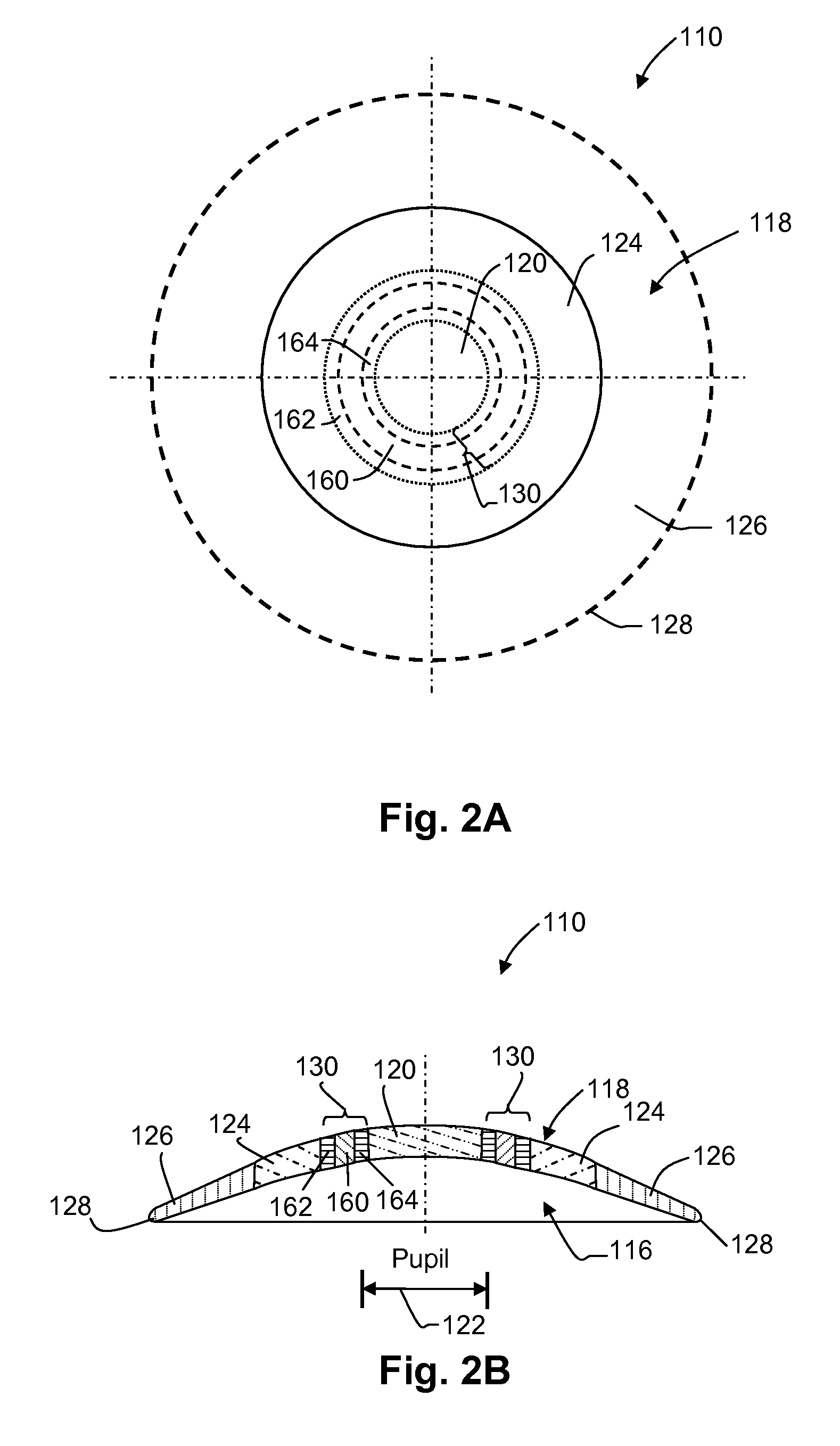Means for controlling the progression of myopia
a technology of myopia and progression, applied in the field of multizone, non-multifocal contact lenses, can solve the problems of undesirable pathologies, too large focusing power of the eye, and blurred vision, and achieve the effects of reducing preventing the progression of myopia, and reducing the elongation of the ey
- Summary
- Abstract
- Description
- Claims
- Application Information
AI Technical Summary
Benefits of technology
Problems solved by technology
Method used
Image
Examples
Embodiment Construction
[0031]The first example of a contact lens (generally indicated at 10) formed in accordance with one embodiment of the present invention will now be described making reference to the lens drawings of FIGS. 1A and 1B, the refractive power diagram of FIG. 3 and the sectional eye diagram of FIG. 5 that shows lens 10 in place on the cornea 12 of a myopic human eye 14. As is conventional, lens 10 is molded from a homogeneous transparent plastic material with a selected refractive index, so as to have a rear curved surface 16 that is matched to the shape of cornea 12 of eye 14 and a front curved surface 18. In this case, however, front surface 18 is shaped so that, in combination with the shape of rear surface 16, two optical zones are provided; namely, (i) a central circular optical zone 20 that is substantially equal to, or, in other words, substantially approximates the diameter of a normal pupil (indicated at 22 in FIGS. 1B and 5) of eye 14, and (ii) an annular peripheral optical zone ...
PUM
 Login to View More
Login to View More Abstract
Description
Claims
Application Information
 Login to View More
Login to View More - R&D
- Intellectual Property
- Life Sciences
- Materials
- Tech Scout
- Unparalleled Data Quality
- Higher Quality Content
- 60% Fewer Hallucinations
Browse by: Latest US Patents, China's latest patents, Technical Efficacy Thesaurus, Application Domain, Technology Topic, Popular Technical Reports.
© 2025 PatSnap. All rights reserved.Legal|Privacy policy|Modern Slavery Act Transparency Statement|Sitemap|About US| Contact US: help@patsnap.com



